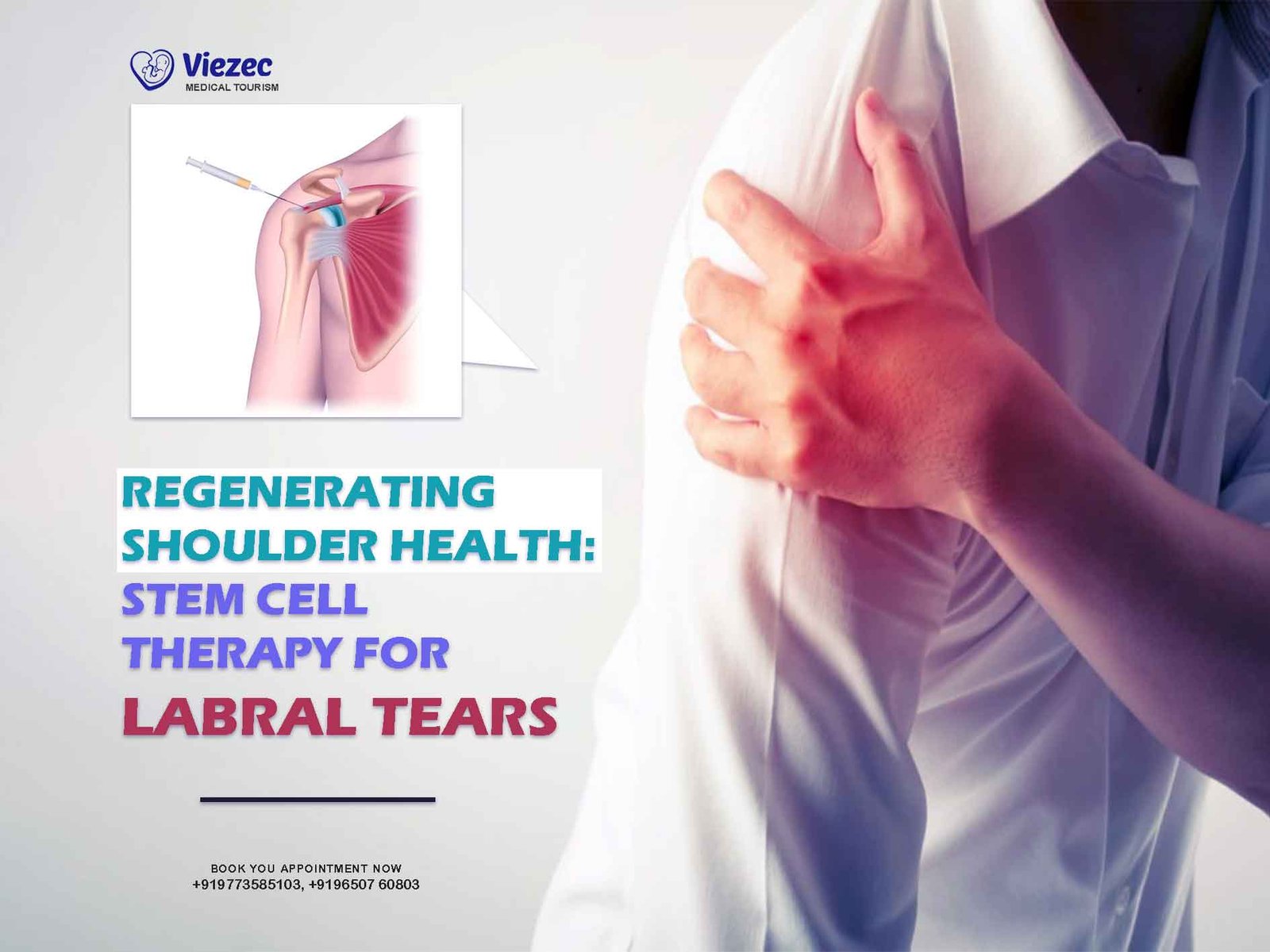Herniated discs are a common source of pain and disability, affecting millions of people worldwide. Traditional treatment options often focus on symptom management rather than addressing the underlying cause. However, recent advancements in regenerative medicine, particularly the use of stem cells, offer promising alternatives for managing herniated discs. Stem cell therapy holds the potential to repair damaged tissue, reduce inflammation, and alleviate pain associated with disc herniation. This article explores the applications of stem cells in the management of herniated discs, including their mechanisms of action, current research findings, and future prospects.
Understanding Herniated Discs
Before delving into stem cell therapy, it’s essential to understand the pathology of herniated discs. Intervertebral discs are soft, gel-like cushions located between the vertebrae of the spine, providing support, flexibility, and shock absorption. A herniated disc, also known as a slipped or ruptured disc, occurs when the inner core of the disc protrudes through the outer layer, putting pressure on nearby nerves or the spinal cord.
Herniated discs can result from age-related degeneration, trauma, or repetitive stress on the spine. Common symptoms include localized or radiating pain, numbness, tingling, and weakness in the affected area. While many cases of disc herniation resolve with conservative treatments such as rest, physical therapy, and pain medication, severe or persistent symptoms may require more invasive interventions, including surgery.
Limitations of Conventional Treatments
Traditional treatments for herniated discs primarily focus on managing symptoms rather than promoting tissue repair. Nonsteroidal anti-inflammatory drugs (NSAIDs), muscle relaxants, and corticosteroid injections are commonly prescribed to alleviate pain and inflammation. Physical therapy and chiropractic care aim to improve spinal alignment and strengthen supporting muscles. However, these approaches often provide temporary relief and may not address the underlying structural damage.
Surgical options, such as discectomy or spinal fusion, may be recommended for cases where conservative treatments fail or when there is significant nerve compression. While surgery can alleviate symptoms by removing the herniated portion of the disc or stabilizing the spine, it carries inherent risks and may not guarantee long-term success. Moreover, spinal surgery recovery can be lengthy, requiring extensive rehabilitation and potentially leading to complications such as infection, nerve damage, or adjacent segment degeneration.
Stem Cell Therapy for Herniated Discs
Stem cell therapy offers a novel approach to treating herniated discs by harnessing the regenerative potential of stem cells to repair damaged tissue and modulate the inflammatory response. Stem cells are undifferentiated cells capable of self-renewal and differentiation into various cell types. Mesenchymal stem cells (MSCs), in particular, have garnered attention for their ability to differentiate into bone, cartilage, and other connective tissues, making them ideal candidates for disc regeneration.
Mechanisms of Action
Stem cells exert their therapeutic effects through multiple mechanisms:
- Differentiation: MSCs can differentiate into cells that comprise the intervertebral disc, such as nucleus pulposus cells and annulus fibrosus cells, promoting tissue repair and regeneration.
- Anti-inflammatory Properties: Stem cells produce anti-inflammatory cytokines and growth factors that help reduce inflammation and modulate the immune response, creating a favorable environment for healing.
- Extracellular Matrix Production: MSCs secrete extracellular matrix components such as collagen and proteoglycans, which contribute to the structural integrity and hydration of the intervertebral disc.
- Neuroprotective Effects: Stem cells may protect nerve tissue from further damage and promote neuronal regeneration, offering potential relief from pain and neurological symptoms.
Sources of Stem Cells
Stem cells can be obtained from various sources, including:
- Bone Marrow: Bone marrow-derived MSCs are commonly used in stem cell therapy for herniated discs due to their abundance and accessibility.
- Adipose Tissue: Adipose-derived stem cells offer an alternative source with a high yield of MSCs and minimal donor site morbidity.
- Umbilical Cord Blood: Umbilical cord-derived stem cells are rich in MSCs and possess immunomodulatory properties, making them attractive for allogeneic transplantation.
Clinical Evidence and Research Findings
Numerous preclinical and clinical studies have investigated the safety and efficacy of stem cell therapy for herniated discs. While research in this field is still evolving, initial findings are promising, suggesting that stem cell-based interventions may offer significant benefits for patients with disc degeneration and herniation.
Preclinical Studies
Preclinical studies in animal models have demonstrated the regenerative potential of stem cells in treating disc herniation. For example, research using rat or rabbit models of disc injury has shown that injection of MSCs promotes disc regeneration, reduces inflammation, and improves disc hydration and biomechanical properties. These findings provide valuable insights into the mechanisms of action and optimal delivery methods for stem cell therapy.
Clinical Trials
Clinical trials evaluating the safety and efficacy of stem cell therapy for herniated discs have also yielded encouraging results. While the majority of studies are still in the early phases, initial findings suggest that stem cell-based interventions are safe and well-tolerated, with some evidence of clinical improvement in pain and function.
A systematic review and meta-analysis published in the Journal of Orthopaedic Surgery and Research examined the outcomes of various stem cell treatments for disc degeneration and herniation. The analysis included randomized controlled trials and prospective cohort studies assessing the use of autologous or allogeneic stem cells derived from bone marrow, adipose tissue, or umbilical cord blood. The review found that stem cell therapy was associated with significant improvements in pain scores, functional outcomes, and disc hydration compared to conventional treatments or placebo.
Ongoing Research and Future Directions
While the existing evidence supports the potential benefits of stem cell therapy for herniated discs, several areas warrant further investigation:
- Optimal Cell Source: Comparative studies are needed to determine the most effective source of stem cells for disc regeneration, taking into account factors such as cell yield, potency, and immunogenicity.
- Delivery Methods: Research into optimal delivery methods, such as direct injection, tissue engineering scaffolds, or minimally invasive procedures, can enhance the efficacy and precision of stem cell therapy.
- Long-term Outcomes: Longitudinal studies with extended follow-up periods are essential to assess the durability and sustainability of treatment effects over time and to monitor for potential complications or adverse events.
- Combination Therapies: Investigating the synergistic effects of stem cell therapy with other modalities, such as growth factors, biomaterials, or physical rehabilitation, may further enhance outcomes and promote tissue repair.
Ethical and Regulatory Considerations
As with any emerging medical technology, stem cell therapy for herniated discs raises ethical and regulatory considerations. While the use of autologous stem cells derived from the patient’s own tissue minimizes ethical concerns related to donor sources, allogeneic transplantation raises issues related to tissue compatibility, immunogenicity, and potential risks of rejection or graft-versus-host disease.
Regulatory oversight is essential to ensure the safety, efficacy, and ethical conduct of stem cell-based interventions. Regulatory agencies such as the Food and Drug Administration (FDA) in the United States provide guidance on the development, approval, and marketing of stem cell products, including requirements for preclinical testing, clinical trial design, and post-market surveillance.
Make an Appointment
Stem cell therapy holds significant promise for the management of herniated discs, offering a regenerative approach to address the underlying pathology and alleviate symptoms. While research in this field is still evolving, preclinical and clinical studies have provided encouraging evidence of the safety and efficacy of stem cell-based interventions. Future research efforts focused on optimizing cell sources, delivery methods, and long-term outcomes are essential to realize the full potential of stem cell therapy in transforming the treatment landscape for herniated discs. With continued advancements in regenerative medicine and translational research, stem cell therapy may emerge as a standard of care for patients suffering from disc degeneration and herniation, offering hope for improved pain relief, functional restoration, and quality of life.









